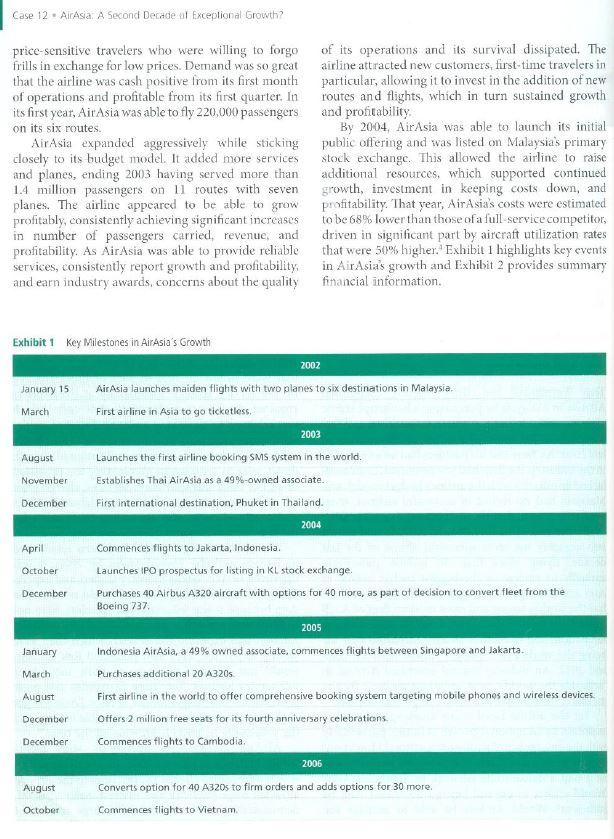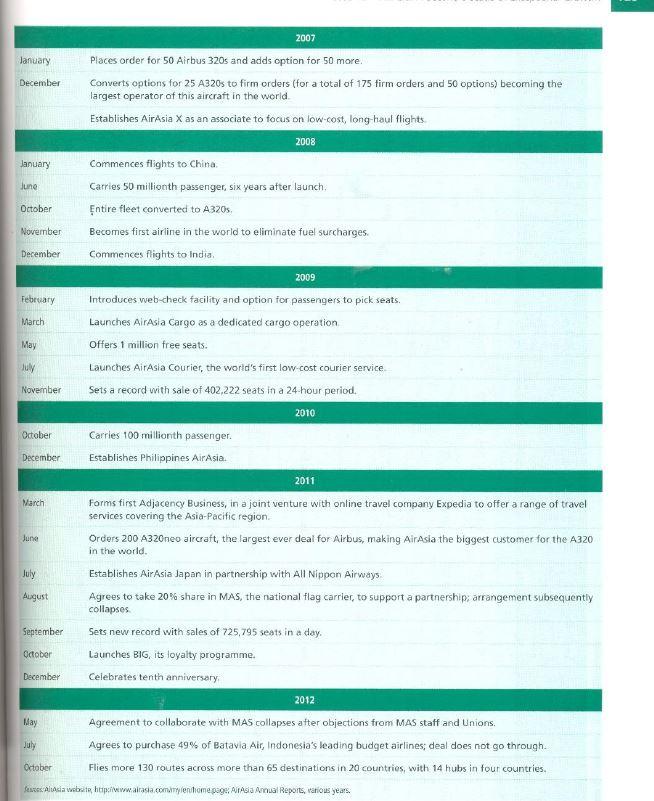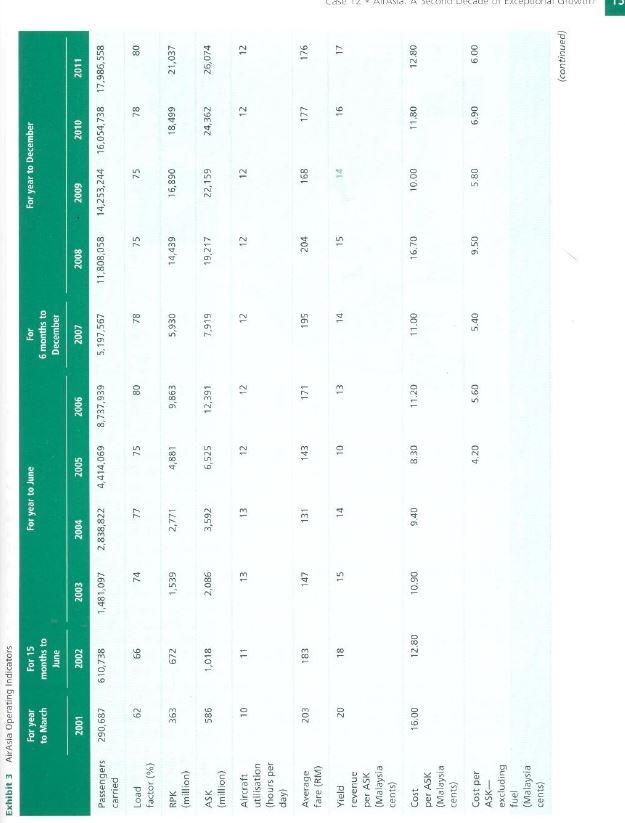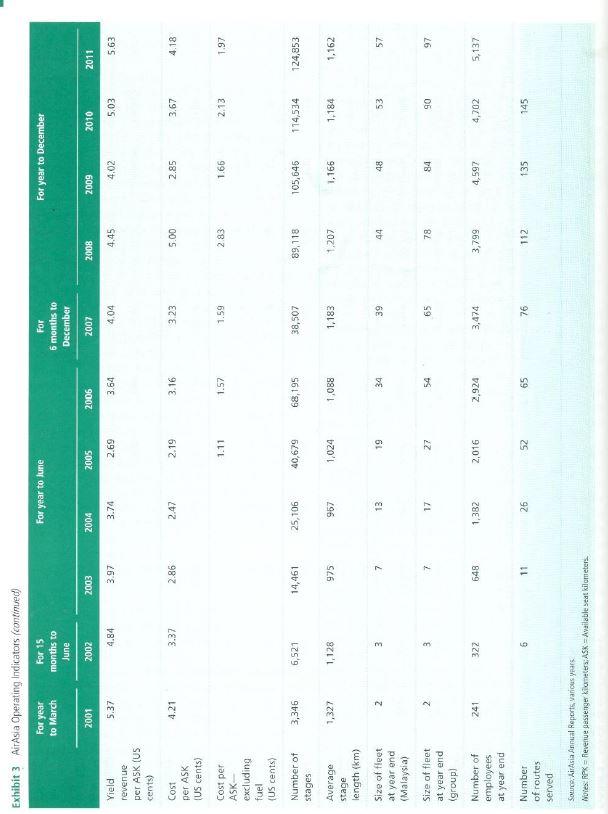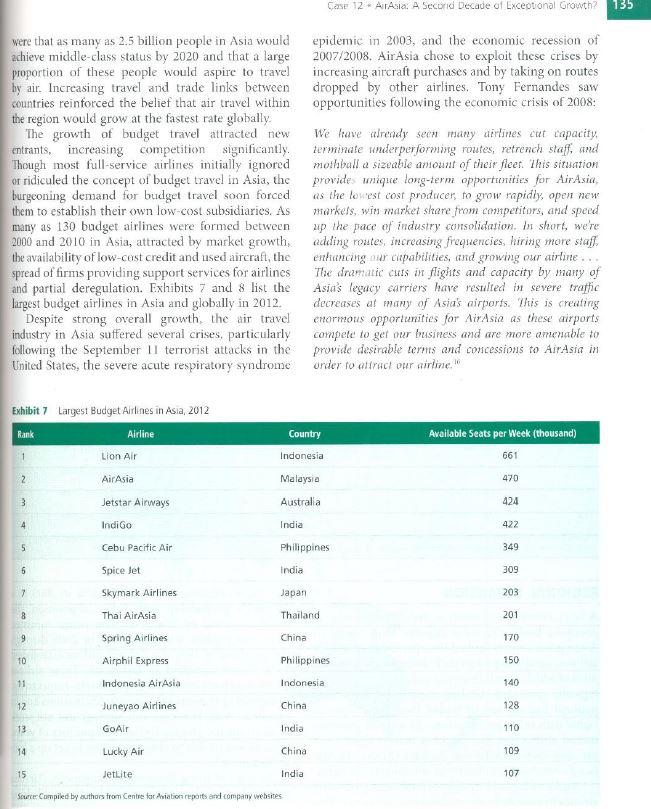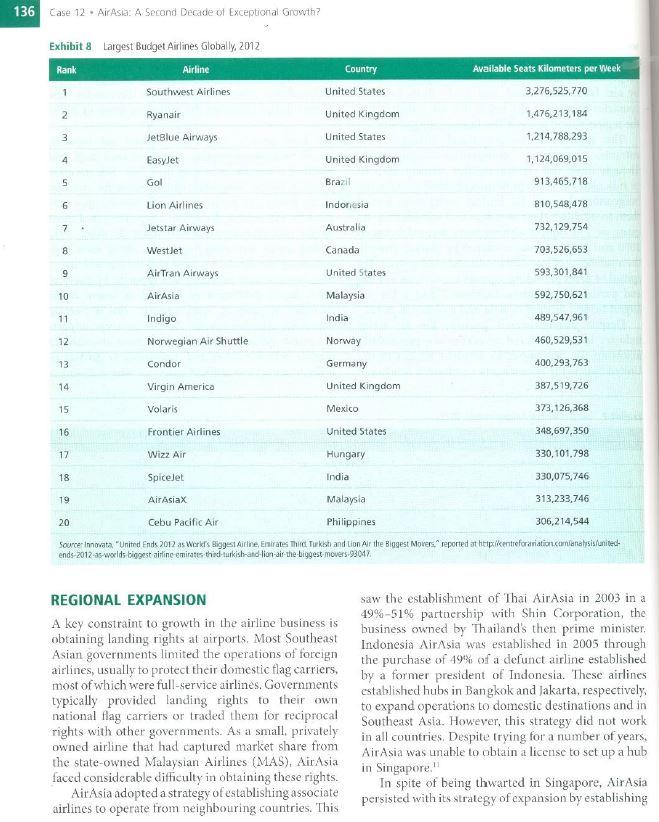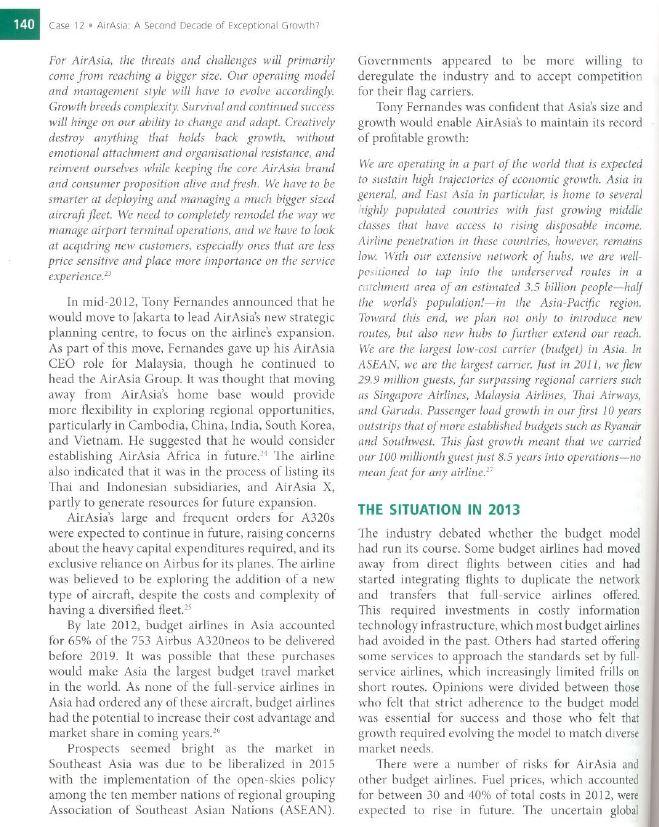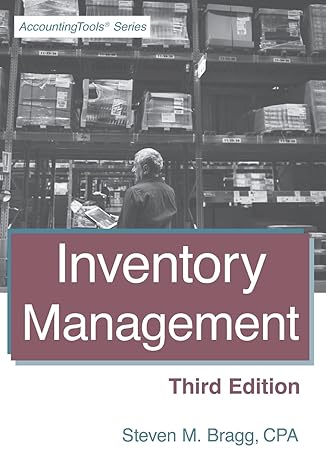Answered step by step
Verified Expert Solution
Question
1 Approved Answer
1. What explains AirAsias success?, How did AirAsia achieve rapid growth? , How can AirAsia sustain its growth and success in future? AirAsia: A Second
1. What explains AirAsia’s success?, How did AirAsia achieve rapid growth? , How can AirAsia sustain its growth and success in future?
AirAsia: A Second Decade of Exceptional Growth? Kulwant Singh, NUS Business School Parmesh Rikhraj, King's College London .. [Wle began as a smal airline with a RM40 million debt and two aireraft. We have successfully turned the the world? What would the future bring? business around and had the most profound impact on the aviation industry. True to formm, we must believe that our achievements today add up to just another beginning. We cannot rest on our laurels. The sky is high enough and wide enough to accommodate our growth plans. It is up to us to rise to the occasion. - Tony Fernandes, chief executive officer (CEO) and cofounder, AirAsia. challenges of becoming one of the largest airlines in EARLY SUCCESS AirAsia was established and operated as a budget airline (also known as a "low-cost carrier" or "no- frills airline"). The budget model offered air travel without any frills or services in exchange for prices that were as low as 10% to 20% of those charged by full-service airlines. Profitability at these prices required absolute commitment to low costs, which with two aircraft, limited routes, large debts, and few was achieved by deploying a standard fleet of single- aisle, single-class planes on direct routes of four hours or shorter in duration; intensive utilization of aircraft; direct sales to passengers; eliminating the provision of all but basic transportation services; charging for all additional services; minimizing labor, facilities and overhead costs; and expanding the market for Tony Fernandes and three friends established AirAsia in Malaysia by purchasing a bankrupt airline prospects in the midst of a major air travel crisis in late 2001. As Tony and his partners had no experience in the industry, the firm had few resources, customers lacked familiarity with the airline's budget model, and Malaysia had no record of successful airlines, most predictions were that the airline would quickly fail. By the end of its first decade, AirAsia had grown into arguably the most successful airline of the last decade, flying more than 30 million passengers annually to emerge as the biggest budget airline in Asia and amongst the largest in the world. AirAsia had the world's largest and most modern fleet of A320 aircraft, the world's lowest cost structure, a very strong reputation, and numerous awards, including four for being the world's Best Budget Airline between 2009 and 2012. An industry journal described AirAsia as arguably the world's most ambitious airline." By any measure, AirAsia had achieved exceptional success. Yet the airline faced many challenges. Could it travel by addressing underserved markets. Though the budget model had been established in Europe and the United States by 2000, it was unproven in Asia. Many industry leaders and experts predicted that the budget model would not work in Asia because it was believed that travelers were not sophisticated enough to purchase tickets through the Internet and expected full service, which they were willing to pay for. They also predicted that startups Would not be able to compete with incumbent full-service airlines. Yet, Tony Fernandes saw great potential for the budget model in Asia: Asia has got such a big population, and the disposable income and maintain its exceptional growth in future, particularly the propensity to travel is growing all the time." AirAsia commenced operations with flights within Malaysia in January 2002. Its low ticket prices, which were initially below the taxi fares to the airport, attracted huge publicity and interest. Sales took off, demonstrating the existence of a large market of with the emergence of strong competitors? How could it grow as its main markets approached maturity and as it had a dense route network in Southeast Asia? Would efforts to expand beyond Southeast Asia be sufficient? Would AirAsia be able to manage the
Step by Step Solution
★★★★★
3.31 Rating (151 Votes )
There are 3 Steps involved in it
Step: 1
Question What explains AirAsias success Answer With directed content analysis AirAsias critical internal success factors can be attributed to extraordinary entrepreneurial foresight skillful applicati...
Get Instant Access to Expert-Tailored Solutions
See step-by-step solutions with expert insights and AI powered tools for academic success
Step: 2

Step: 3

Ace Your Homework with AI
Get the answers you need in no time with our AI-driven, step-by-step assistance
Get Started



